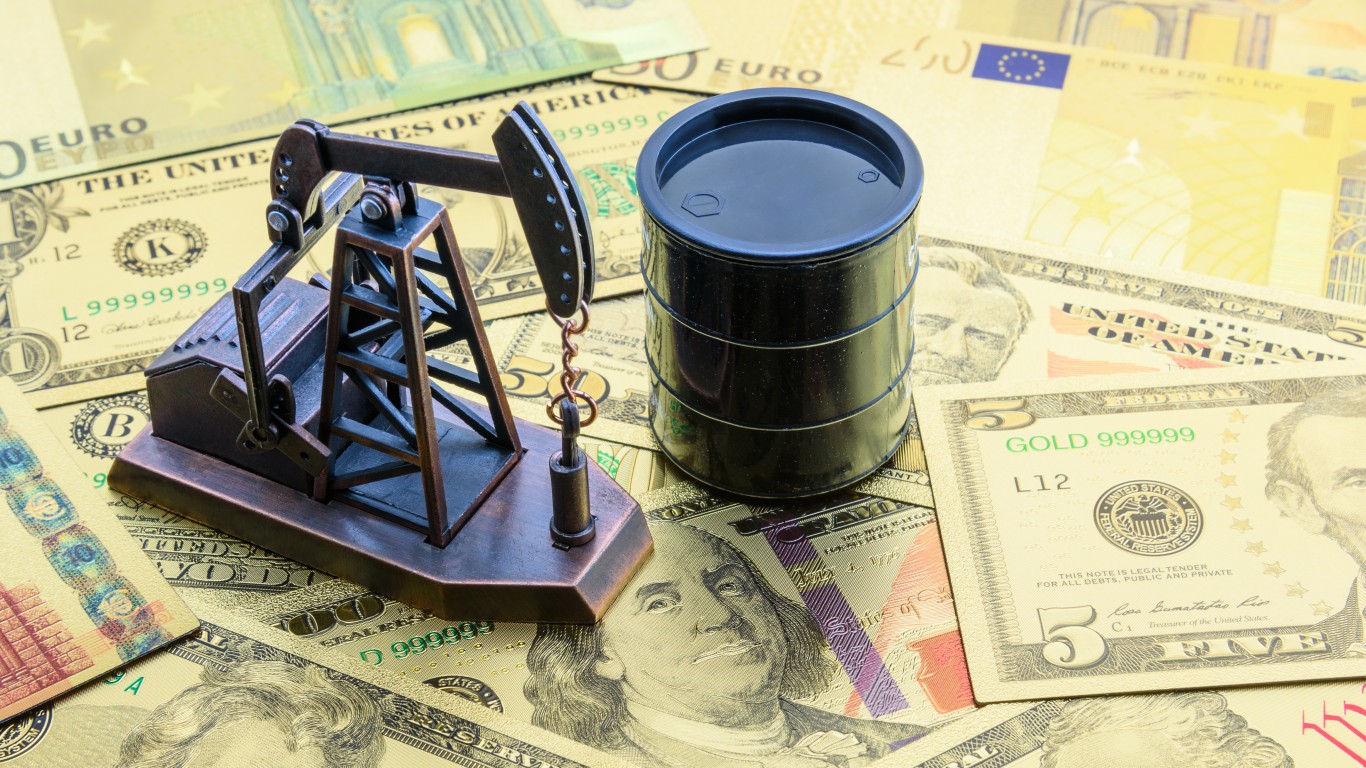
Saudi Arabian Oil reported third-quarter 2020 results before markets opened Tuesday. The country’s national oil company posted diluted earnings per share (EPS) of SAR0.22 ($0.06) on revenue of SAR228.6 billion ($61.0 billion). In the same period a year ago, the company reported EPS of SAR0.40 ($0.11) on revenues of SAR304.6 billion ($81.2 billion). Saudia Arabian riyals (SAR) are set at a fixed exchange rate of 3.75 to the U.S. dollar.
The company maintained its commitment to pay out $18.75 billion in dividends even though that amount exceeded by about a third Aramco’s free cash flow of $12.4 billion. Free cash flow in the third quarter of last year totaled $20.6 billion.
Aramco produced an average of 12.3 million barrels of oil equivalent per day through the first nine months of this year, of which 9.2 million barrels were crude oil. Domestic consumption of crude oil represented 39.5% of third-quarter production and 38.2% of the nine-month production total.
Pretax income fell by nearly 44% year over year and net income fell by nearly 45% in the quarter, reflecting the impact of lower crude oil prices and volumes sold and weaker refining and chemicals margins.
Aramco stock made its public debut in December of last year at SAR32 on Saudi Arabia’s Tadawul exchange. As of Tuesday’s close (in Saudia Arabia), shares have gained just 2.55 riyals ($0.68). Only 300 million of Aramco’s 2 billion shares trade publicly.
At the time of its IPO, Aramco was valued at approximately $1.7 trillion. At Tuesday’s close, the company’s market cap was around $2.0 trillion, just ahead of Apple’s market cap of $1.98 trillion at the end of September.
Investors in Aramco have traded share price appreciation for an explicit pledge to pay $75 billion in annual dividends through 2024. Through the first nine months of 2020, the company has paid $50.9 billion in dividends. For the company to live up to its promise, fourth-quarter dividend payments will have to total nearly $25 billion. So far this year, Aramco has added about $16 billion to its borrowings, most of which will be used to pay its dividend.
It is tempting to argue that no company can afford to keep paying sky-high dividends when free cash flow cannot even match the costs. But Aramco is not just another oil company. It is virtually guaranteed to be the last oil company standing as demand for fossil fuels falls over the next decade or two or three. As that happens, the Saudis may once again control oil prices the way the country has done for at least the past 50 years.
Travel Cards Are Getting Too Good To Ignore (sponsored)
Credit card companies are pulling out all the stops, with the issuers are offering insane travel rewards and perks.
We’re talking huge sign-up bonuses, points on every purchase, and benefits like lounge access, travel credits, and free hotel nights. For travelers, these rewards can add up to thousands of dollars in flights, upgrades, and luxury experiences every year.
It’s like getting paid to travel — and it’s available to qualified borrowers who know where to look.
We’ve rounded up some of the best travel credit cards on the market. Click here to see the list. Don’t miss these offers — they won’t be this good forever.
Thank you for reading! Have some feedback for us?
Contact the 24/7 Wall St. editorial team.




